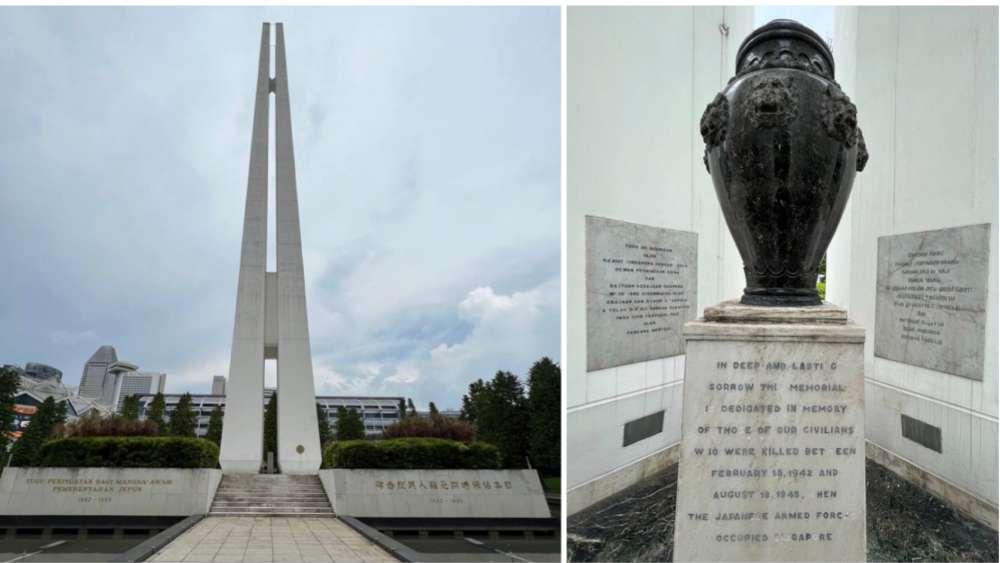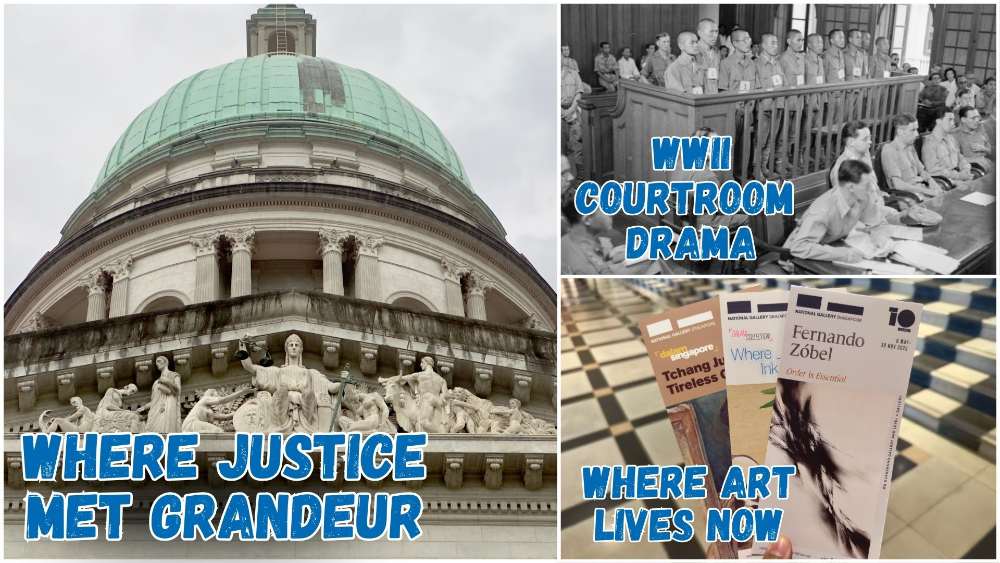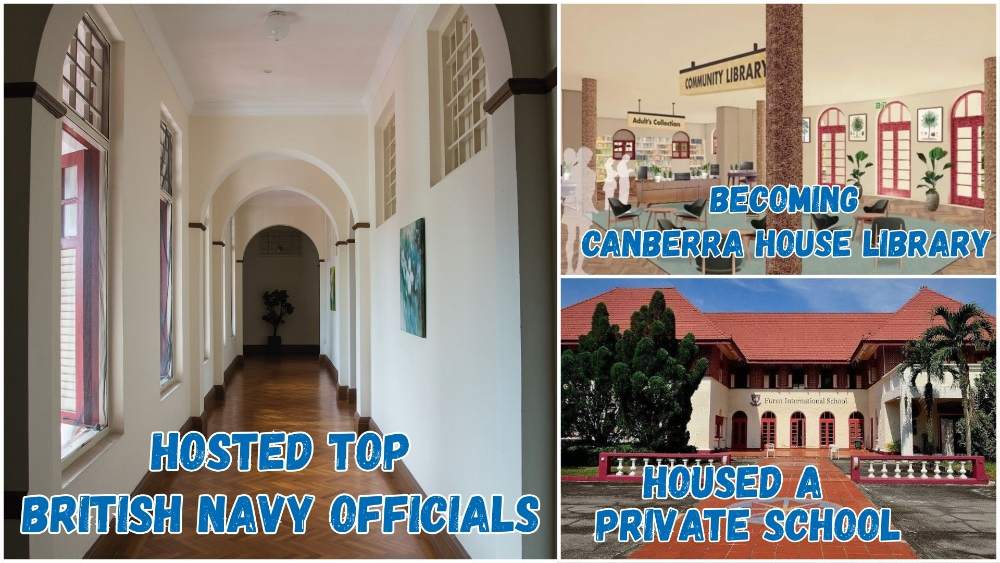National Monuments Of Singapore: Victoria Theatre and Victoria Concert Hall
What is a National Monument? Who gazettes them? How many national monuments are there in Singapore? To date, the Preservation of Sites and Monuments, a division of National Heritage Board, has identified and gazetted 75 buildings, structures and sites of national significance as an integral part of Singapore’s built heritage.
And we're here to tell you all about them - one National Monument at a time!
You've probably passed by or stepped into more than a few of them without realising they were National Monuments: Al-Abrar Mosque, Asian Civilisations Museum, the Civilian War Memorial, Saint Andrew's Cathedral, the Esplanade Park Memorials, Fort Siloso on Sentosa - no need to plan an itinerary for friends visiting from overseas; just show them this article ✌️
In this edition, we throw the spotlight on a performing arts centre that houses two of Singapore's oldest existing purpose-built performance venues: the spectacular Victoria Theatre and Victoria Concert Hall.
📍 Location
Victoria Theatre and Victoria Concert Hall were collectively gazetted together as the 26th National Monument, and are located near other National Monuments, such as the Arts House, the Asian Civilisations Museum, and Parliament House Block C. The MRT stations nearest to them are City Hall or Raffles Place.
📅 Significant dates
Dates built:
- 1855-1862: Town Hall (Victoria Theatre today)
- 1903-1905: Victoria Memorial Hall (Victoria Concert Hall today)
- 1906-1909: Renovation of Town Hall into Victoria Theatre
- 1979-1980: Renovation of Victoria Memorial Hall into Victoria Concert Hall
Milestones:
- 1862: Town Hall
- 11 Feb 1909: Victoria Theatre
- 18 Oct 1905: Victoria Memorial Hall
- 1 Oct 1980: Victoria Concert Hall
Date collectively gazetted as National Monument: 14 Feb 1992
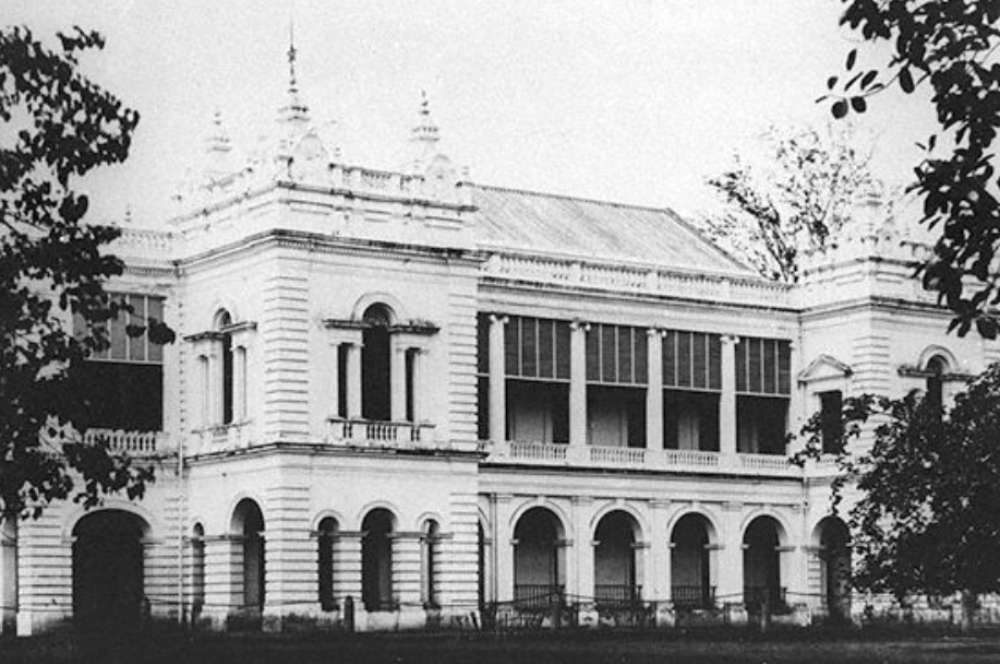 The Town Hall circa 1880.| IMAGE: WIKIMEDIA COMMONS/@NATIONAL MUSEUM OF SINGAPORE
The Town Hall circa 1880.| IMAGE: WIKIMEDIA COMMONS/@NATIONAL MUSEUM OF SINGAPORE
📜 History
Town Hall (Victoria Theatre today)
Victoria Theatre was originally built as the Town Hall. Designed by Colonial Engineer John Bennett, (he was also responsible for Saint Andrew's Cathedral), its construction took place between 1855 and 1862, funded by both the British Administration and public donations. Managed by the Municipal Commissioners, the two-storey building housed municipal offices on the ground floor, while the upper level functioned as a social hall. It also housed the Singapore Library from 1862 to 1876.
The Town Hall served as a successor to the Assembly Rooms, an attap-roofed building that once stood on the site of the Old Hill Street Police Station. The Assembly Rooms housed a small theatre and functioned as a venue for public gatherings.
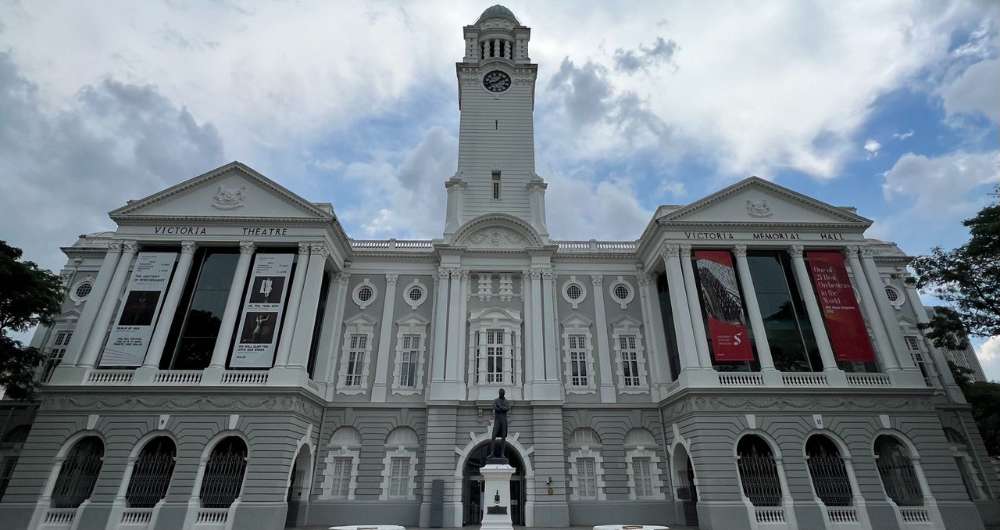 Public funds for construction of the Memorial Hall exceeded the construction costs, thus leaving a surplus for the renovation of the Town Hall later on so that it blended in with the new hall. | IMAGE: NG KAI
Public funds for construction of the Memorial Hall exceeded the construction costs, thus leaving a surplus for the renovation of the Town Hall later on so that it blended in with the new hall. | IMAGE: NG KAI
Victoria Memorial Hall (Victoria Concert Hall today)
Victoria Memorial Hall, now known as Victoria Concert Hall, was constructed adjacent to the Town Hall between 1903 and 1905 as a tribute to Queen Victoria, who passed away on 22 Jan 1901. The design of the Memorial Hall was the work of Regent A. J. Bidwell from the renowned architectural firm Swan & Maclaren (the same firm that designed the Cenotaph and Civilian War Memorial).
Governor of the Straits Settlements, Sir Frank A. Swettenham, initiated a fundraising appeal for the project, which saw an overwhelming public response. Additionally, both the British Administration and the Municipality of Singapore contributed funds as well.
The foundation stone was laid on 10 Aug 1902, coinciding with the coronation celebrations of King Edward VII. Subsequently, on 18 Oct 1905, the Victoria Memorial Hall was officially inaugurated by Sir John Anderson, who had succeeded Sir Swettenham as Governor of the Straits Settlements. The grand building was equipped with electric fans, ensuring a cool and comfortable environment for large gatherings.
A portico (a structure consisting of a roof supported by columns at regular intervals, typically attached as a porch to a building was created on the Town Hall, mirroring that of the new Memorial Hall, thereby creating a unified appearance.
On 18 Oct 1905, Victoria Memorial Hall was declared open by then-Governor of the Straits Settlements Sir John Anderson. The elegant building had electric fans that cooled the interior, making it possible for a large crowd to meet in comparative comfort.
The Victoria Memorial Hall underwent a year-long revamp in 1979, and reopened as the Victoria Concert Hall.
The Victoria Concert Hall was inaugurated on 1 Oct 1980 by then-Prime Minister Lee Kuan Yew. Mr Lee’s inauguration speech was followed by a performance from the concert hall’s new resident orchestra, the Singapore Symphony Orchestra (SSO).
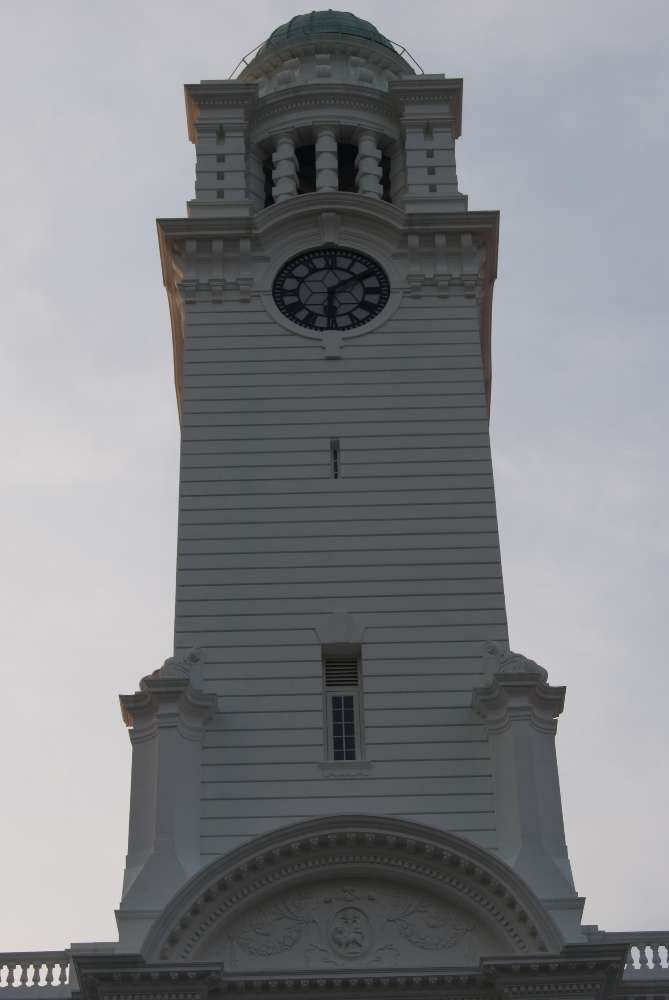
The clock is 4m wide and weighs 1 tonne (1,000kg). There is a bell turret above it, which is capped by a cupola (a small dome adorning a roof or ceiling). | IMAGE: WIKIMEDIA COMMONS/@JACKLEE
The iconic Clock Tower
Linking the Town Hall and Victoria Memorial Hall is a 54m high clock tower, which was completed in 1905. However, the clock faces were only fitted with their timepieces and a peal of bells a year later, courtesy of a donation from the Straits Trading Company. On 1 Feb 1907, the Duchess of Connaught, Princess Louise Margaret of Prussia, officially set the clock in motion during a ceremonial event.
In earlier times, a dedicated clock winder was employed to manually wind and maintain the clock’s mechanism on a regular basis.
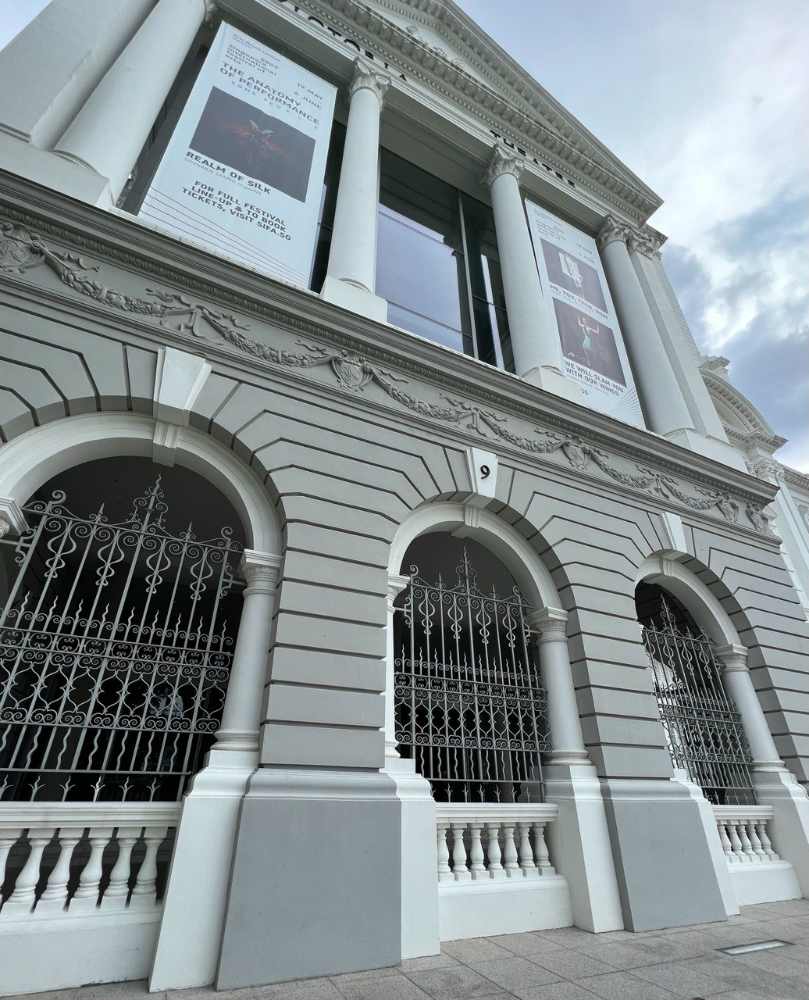
The Pirates of Penzance, a comic opera about pirates, was the first performance to be staged in the renovated Town Hall when it reopened as Victoria Theatre. | IMAGE: NG KAI
Victoria Theatre
Following the completion of Victoria Memorial Hall, a decision was made to transform the Town Hall into a dedicated theatre while ensuring its façade matched the elegance of the Memorial Hall. The renovation works were carried out by Swan & Maclaren, based on designs by Bidwell. The newly refurbished Victoria Theatre was officially unveiled on 11 Feb 1909.
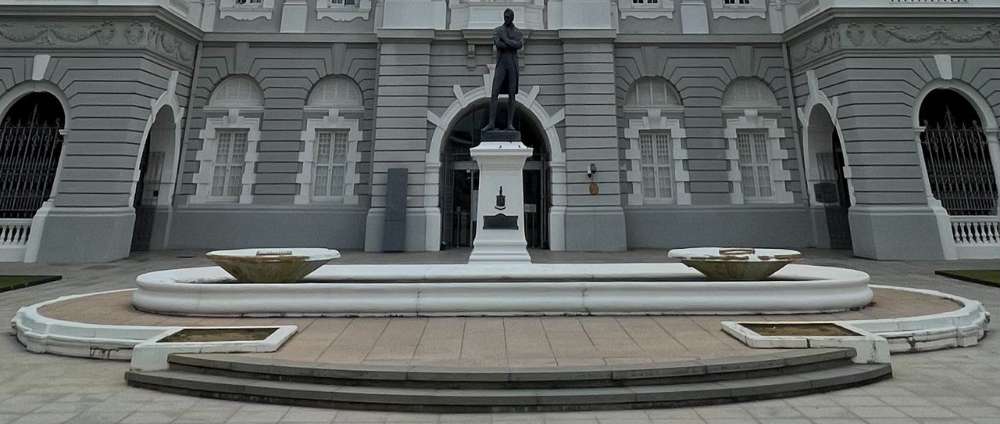 IMAGE: NG KAI
IMAGE: NG KAI
On 6 Feb 1919, as part of the centennial celebrations in 1919, marking 100 years since Singapore’s founding, the statue of Stamford Raffles was relocated from the Padang to the front of Victoria Memorial Hall. To complement this move, a specially designed colonnade (a row of evenly spaced columns supporting a structure) with a pool was constructed to serve as the statue’s new home.
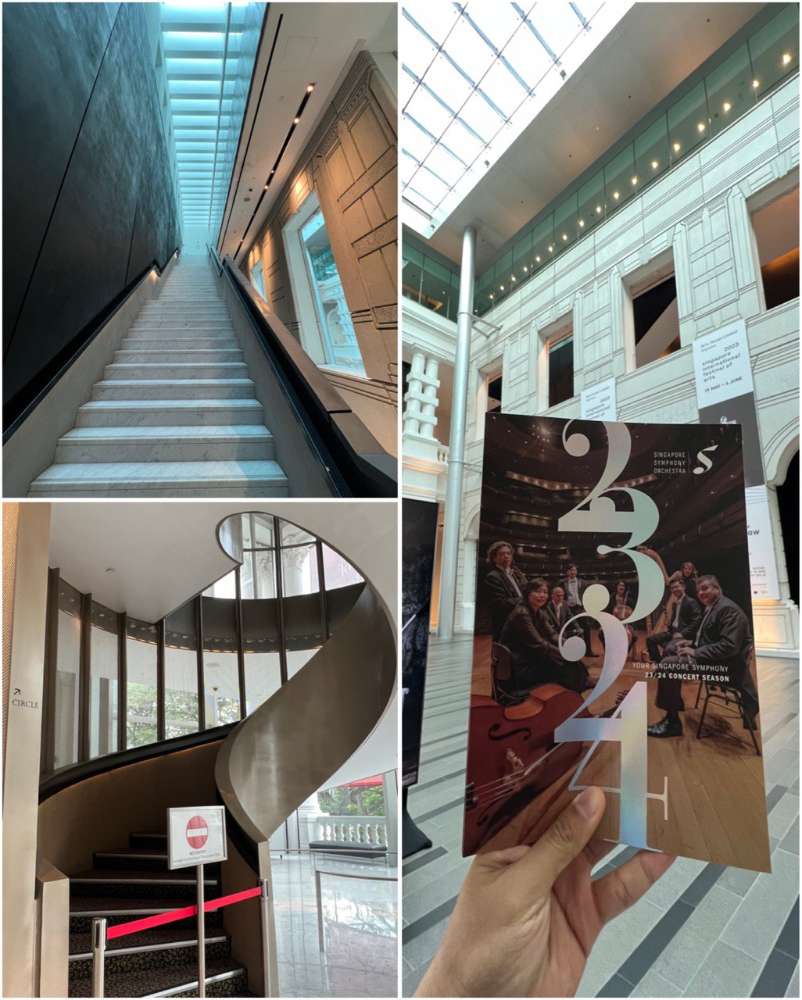 IMAGES: NG KAI
IMAGES: NG KAI
📐 Design and architecture
Victoria Theatre and Victoria Concert Hall
Victoria Theatre and Victoria Concert Hall showcase strong influences of the Neoclassical architectural style, which was also embraced in other colonial civic buildings in Singapore, such as the nearby Former City Hall and Former Supreme Court. Among the notable Neoclassical elements featured in these landmarks are the towering Corinthian columns on their façades, crowned with pediments (the triangular upper part of the front of a classical building) that now display the State Crest of Singapore.
Both the interior and exterior walls are adorned with intricate mouldings of festoons—decorative arrangements of fruits, flowers, and ribbons—alongside other elegant plaster embellishments. Additionally, stucco cartouches (oval shield motifs), bear the monogram "VRI", representing Victoria, Regina (Latin for "Queen"), and Imperatrix ("Empress"), serving as a tribute to the late Queen Victoria.
🕖 Opening hours
10am to 9pm daily.
🎟️ Admission
Free, except for ticketed events. Find out more here.
If you're lazy to head down, you can even explore the site via a 360° virtual tour.
For the latest updates on Wonderwall.sg, be sure to follow us on TikTok, Telegram, Instagram, and Facebook. If you have a story idea for us, email us at [email protected].






